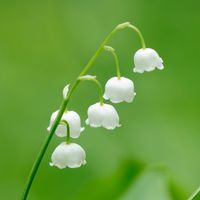Treating Blight On Okra Plants: Recognizing Southern Blight In Okra Crops

There are vegetables in the garden that seem to be universally embraced and then there is okra. It seems to be one of those vegetables that you either love or love to hate. If you love okra, you grow it for culinary reasons (to add to gumbo and stews) or for aesthetic reasons (for its ornamental, hibiscus-like flowers). However, there are times when even the most ardent lover of okra is left with a bad taste in their mouth – and that is when there is blight on okra plants in the garden. Just what is okra southern blight and how do you treat okra with southern blight? Let’s find out, shall we?
What is Southern Blight in Okra?
Southern blight in okra, caused by the fungus Sclerotium rolfsii, was discovered in 1892 by Peter Henry in his Florida tomato fields. Okra and tomatoes are not the only plants to be susceptible to this fungus. It actually throws a wide net, encompassing at least 500 species in 100 families with curcurbits, crucifers, and legumes being its most common targets. Okra southern blight is most prevalent in the southern United states and tropical and subtropical regions. Southern blight starts with the fungus Sclerotium rolfsii, which resides within dormant asexual reproductive structures known as sclerotium (seed-like bodies). These sclerotium are germinated under favorable weather conditions (think “warm and wet”). Sclerotium rolfsii then begins a feeding frenzy on decaying plant material. This fuels the production of a fungal mat composed of a mass of branching white threads (hyphae), referred to collectively as the mycelium. This mycelial mat comes into contact with an okra plant and injects the chemical lectin into the stem, which helps the fungi attach and bind to its host. As it feeds on the okra, a mass of white hyphae is then produced around the base of the okra plant and on top of the soil over a period of 4-9 days. On the heels of this is the creation of white seed-like sclerotia, which turn a yellowish-brown color, resembling mustard seeds. The fungus then dies and the sclerotia lie in wait to be germinated the following growing season. An okra with southern blight can be identified by the aforementioned white mycelial mat but also by other tell-tale signs including yellowing and wilting foliage as well as browning stems and branches.
Okra Southern Blight Treatment
The following tips on controlling blight on okra plants might prove useful: Practice good garden sanitation. Keep your garden free of weeds and plant debris and decay. Remove and destroy infected okra plant matter immediately (do not compost). If the sclerotia seed-bodies have set, you will need to clean them all up as well as remove the top few inches (5 to 10 cm.) of soil in the affected area. Avoid overwatering. When watering, try doing so early in the day and consider the use of drip irrigation to ensure you are only watering at the base of the okra plant. This helps to keep your foliage drier. Use a fungicide. If you are not opposed to chemical solutions, you may want to consider a soil drench with the fungicide Terrachlor, which is available to home gardeners and is probably the most effective means of treating okra with southern blight.
Sign up for the Gardening Know How newsletter today and receive a free copy of our e-book "How to Grow Delicious Tomatoes".

Shelley Pierce was a writer for Gardening Know How, contributing to hundreds of articles for the site.